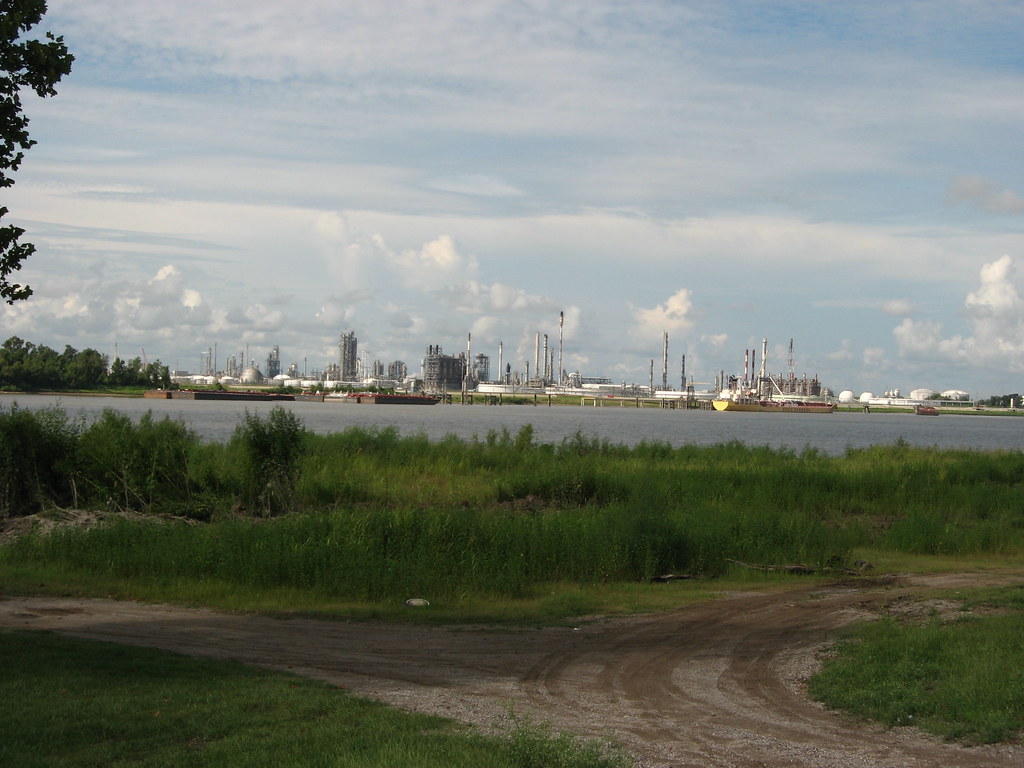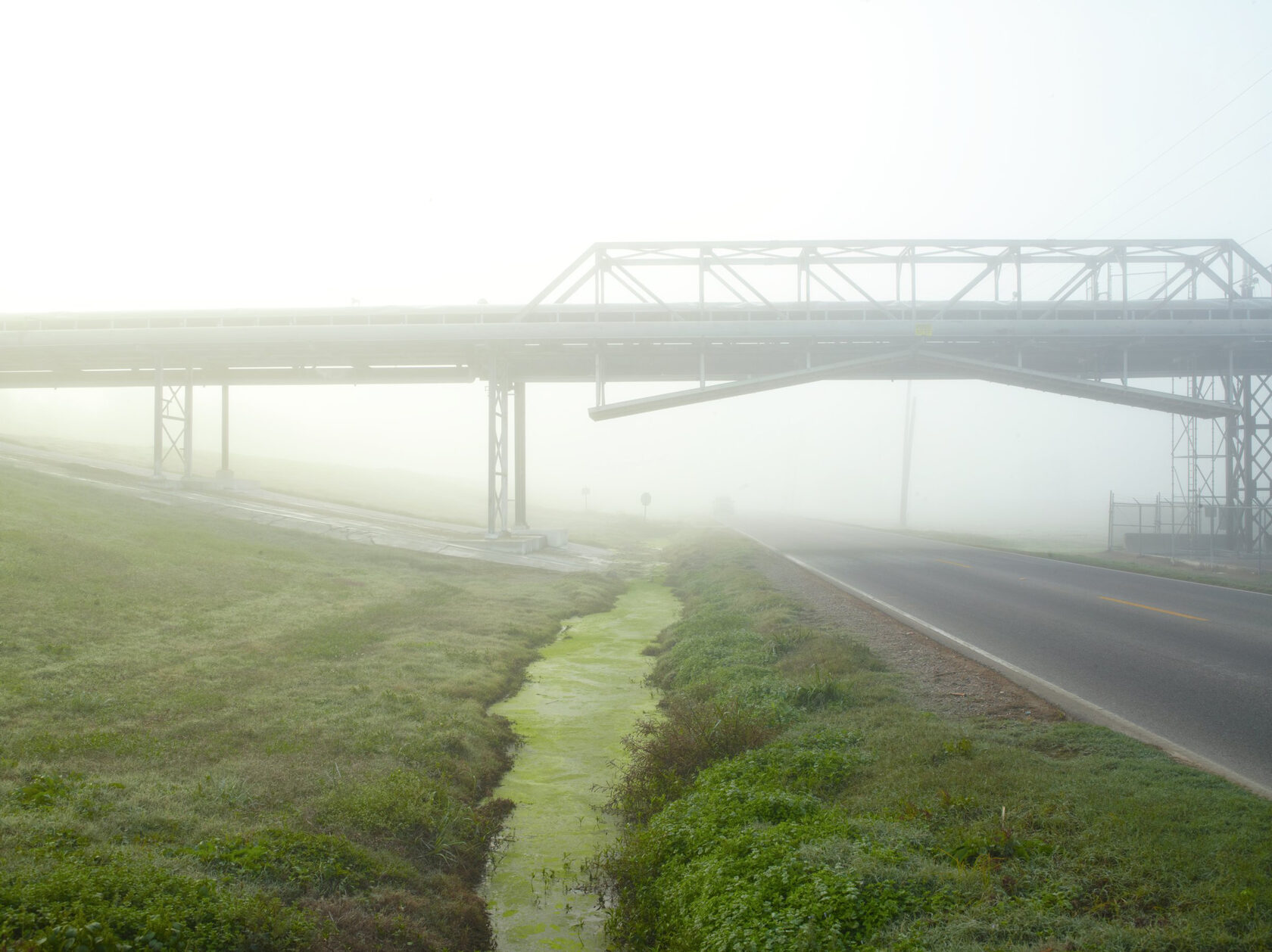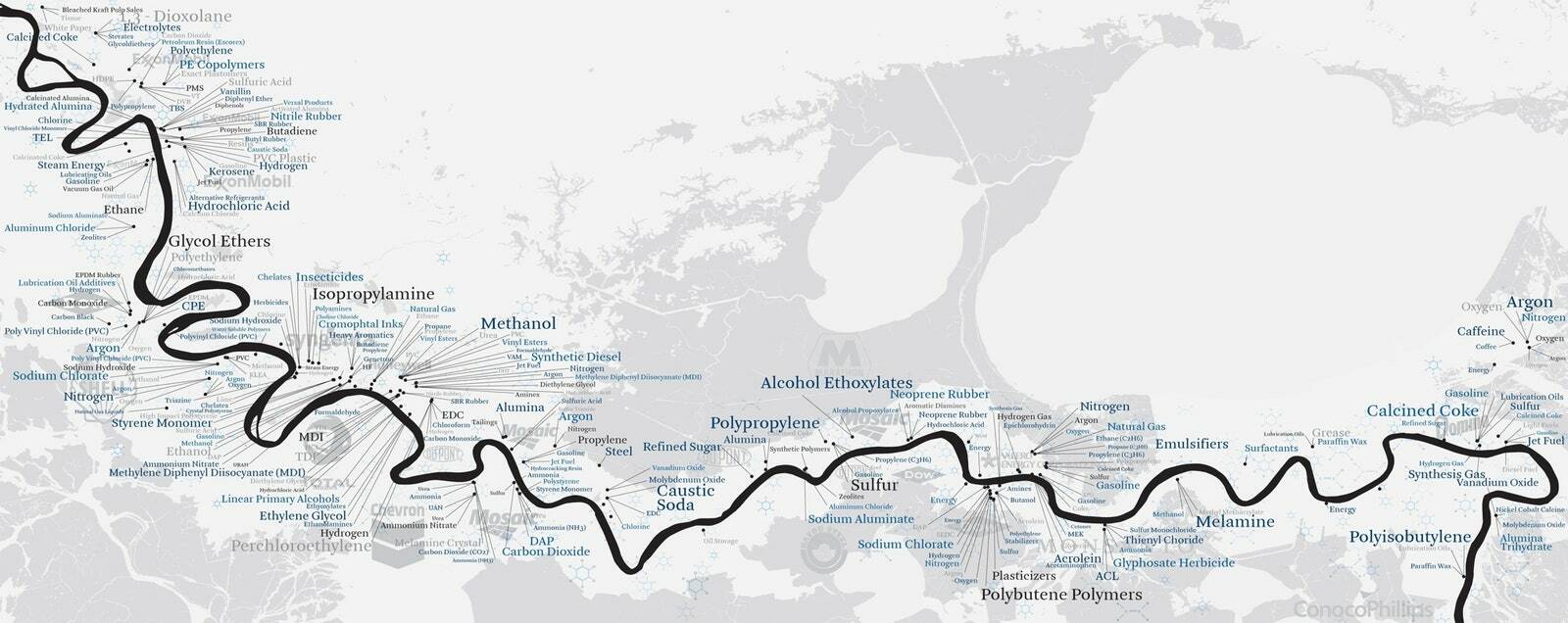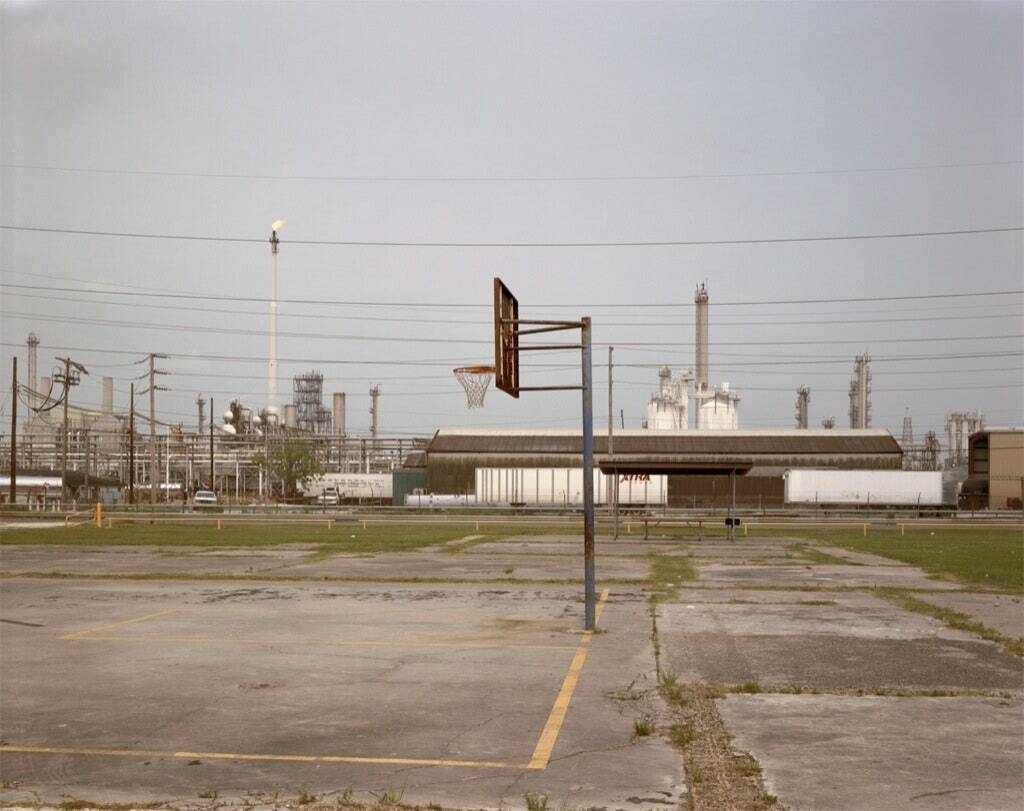Slavery in Louisiana: a new face for an old enemy
Along the banks of the lower Mississippi River in southeast Louisiana lies St. John the Baptist Parish, historically known for its fertile farm grounds. Tourists who want to visit the area can find relevant information on St. John's official government website. The Parish, so the website's visitors page states, offers a wide variety of attractions such as local festivals and fairs, "Cajun Pride" tours in Louisiana's famed wetlands, and guided visits to sugar cane plantations. The latter attraction might raise some questions in those who have a mild understanding of history, as it evokes bitter colonial imagery of 18th and 19th century enslaved plantation workers forcefully toiling on cotton, tobacco and sugar cane fields. Interestingly, however, the website makes minimal reference to the Parish’s (and wider Louisiana's) history of slavery. Surely a state that proudly lists its plantations and beautiful French colonial houses as tourist attractions would devote more attention to the horrors of slavery inextricably associated with them?
To my astonishment, however, a quick research into the matter resulted in numerous accounts and records of slavery flourishing in colonial Louisiana between 1790 and 1810. As a result of a highly lucrative sugar boom, almost 18,000 slaves were transported from Africa, the Bahamas and other North American regions into southeast Louisiana alone during this period. What's more, the Lower Mississippi area was not only a bastion of slavery, but St. John the Baptist Parish itself was the epicenter of the 1811 German Coast Uprising, the largest slave insurrection in U.S. history! This piece of historical trivia, however, does not seem to have earned an anecdotal space on the government-run "history of St. John the Baptist Parish" webpage.
Today, St. John the Baptist Parish authorities remain once again silent on an entirely different yet imminently related issue. The large sugar plantations and agricultural lands on the banks of the Mississippi River have partly given way to a new kind of economically lucrative enterprise with an insidious biopolitical underbelly: the petrochemical industry. At least 150 chemical and petroleum-processing plants now form an industrial corridor along the Lower Mississippi River, between Baton Rouge and New Orleans, towering over multiple towns and communities, most of which were once established by freedmen before the Civil War or founded after. For the past 50 years, higher cancer rates have consistently been recorded in these communities. For this reason, the corridor colloquially became known as "Cancer Alley" or "Death Alley".
While suspicions that toxic water and air pollution were the primary cause have been voiced by residents for decades, little to no effort by government authorities was put into finding evidence of this. It was only in December 2015, when the US Environmental Protection Agency (EPA) published a report on toxic air, that an extremely higher risk of cancer – the highest in the U.S. - throughout the region was confirmed, with the small town of Reserve at the epicenter. The culprit now had a name: a gas by the name of Chloroprene, released by the American petrochemical company "Dupont." Dupont sold the company to Denka Company Limited, a Japanese owned chemical company, in 2015. Despite the EPA's publication, no significant actions were undertaken by federal or local governments to tackle the issue.
" The same land that held people captive through slavery is now holding people captive through this environmental injustice and devastation. It is killing people by over-polluting them with toxins in their water and in their air. This is slavery of another kind."
(Civil Rights leader Reverend Dr. William J. Barber)
Today, however, things are starting to look different. Local communities, advocacy groups and civil rights movements have taken matters into their own hands to combat the "slow violence" perpetrated against them. One such movement is the Louisiana Bucket Brigade, a collective that has among other achievements successfully prevented the Chinese-owned Wanhua company from being built in May 2019. Another group is RISE St. James, founded mostly by local African-American women, who are fighting against the construction of the Sunshine project, a behemoth of Taiwanese owned Formosa Plastics that would produce more pollution than three coal plants combined. Inclusive Louisiana is another group that is focusing on eradicating the systems that produce such environmental racism in the first place. While the battle for environmental justice and the complete eradication of old hegemonic structures of exploitation and racial discrimination are far from won, the following blog posts will provide a queer analysis of toxicity as well as highlight voices of resistance and resilience that are far too often kept silent: African-American women who are speaking truth to power.
To my astonishment, however, a quick research into the matter resulted in numerous accounts and records of slavery flourishing in colonial Louisiana between 1790 and 1810. As a result of a highly lucrative sugar boom, almost 18,000 slaves were transported from Africa, the Bahamas and other North American regions into southeast Louisiana alone during this period. What's more, the Lower Mississippi area was not only a bastion of slavery, but St. John the Baptist Parish itself was the epicenter of the 1811 German Coast Uprising, the largest slave insurrection in U.S. history! This piece of historical trivia, however, does not seem to have earned an anecdotal space on the government-run "history of St. John the Baptist Parish" webpage.
Today, St. John the Baptist Parish authorities remain once again silent on an entirely different yet imminently related issue. The large sugar plantations and agricultural lands on the banks of the Mississippi River have partly given way to a new kind of economically lucrative enterprise with an insidious biopolitical underbelly: the petrochemical industry. At least 150 chemical and petroleum-processing plants now form an industrial corridor along the Lower Mississippi River, between Baton Rouge and New Orleans, towering over multiple towns and communities, most of which were once established by freedmen before the Civil War or founded after. For the past 50 years, higher cancer rates have consistently been recorded in these communities. For this reason, the corridor colloquially became known as "Cancer Alley" or "Death Alley".
While suspicions that toxic water and air pollution were the primary cause have been voiced by residents for decades, little to no effort by government authorities was put into finding evidence of this. It was only in December 2015, when the US Environmental Protection Agency (EPA) published a report on toxic air, that an extremely higher risk of cancer – the highest in the U.S. - throughout the region was confirmed, with the small town of Reserve at the epicenter. The culprit now had a name: a gas by the name of Chloroprene, released by the American petrochemical company "Dupont." Dupont sold the company to Denka Company Limited, a Japanese owned chemical company, in 2015. Despite the EPA's publication, no significant actions were undertaken by federal or local governments to tackle the issue.
" The same land that held people captive through slavery is now holding people captive through this environmental injustice and devastation. It is killing people by over-polluting them with toxins in their water and in their air. This is slavery of another kind."
(Civil Rights leader Reverend Dr. William J. Barber)
Today, however, things are starting to look different. Local communities, advocacy groups and civil rights movements have taken matters into their own hands to combat the "slow violence" perpetrated against them. One such movement is the Louisiana Bucket Brigade, a collective that has among other achievements successfully prevented the Chinese-owned Wanhua company from being built in May 2019. Another group is RISE St. James, founded mostly by local African-American women, who are fighting against the construction of the Sunshine project, a behemoth of Taiwanese owned Formosa Plastics that would produce more pollution than three coal plants combined. Inclusive Louisiana is another group that is focusing on eradicating the systems that produce such environmental racism in the first place. While the battle for environmental justice and the complete eradication of old hegemonic structures of exploitation and racial discrimination are far from won, the following blog posts will provide a queer analysis of toxicity as well as highlight voices of resistance and resilience that are far too often kept silent: African-American women who are speaking truth to power.
CANCER ALLEY
by Mehdi Firouzi

Mississippi River Petrochemical Industry, photo by Ken Lund

Notes:
1. St. John the Baptist Parish, ed. “History of St. John the Baptist Parish.” (http://www.sjbparish.com/visitors_general.php?id=81).
2. Pasley, James. “Inside Louisiana's Horrifying 'Cancer Alley,' an 85-Mile Stretch of Pollution and Environmental Racism That's Now Dealing with Some of the Highest Coronavirus Death Rates in the Country.” Business Insider, April 10, 2020. https://www.businessinsider.com/louisiana-cancer-alley-photos-oil-refineries-chemicals-pollution-2019-11?r=US&IR=T.
3. St. John the Baptist Parish, ed. “Atractions.” [http://www.sjbparish.com/visitors\_general.php?id=14](http://www.sjbparish.com/visitors_general.php?id=14)
4. Rothman, Adam. Slave Country: American Expansion and the Origins of the Deep South. Cambridge: Harvard University Press, 2005.
5. Lartey, Jamiles, and Oliver Laughland. “Cancer Town.” The Guardian, May 6, 2019. https://www.theguardian.com/us-news/ng-interactive/2019/may/06/cancertown-louisana-reserve-special-report.
6. Lerner, Sharon. “The Plant Next Door.” The Intercept, March 24, 2017. https://theintercept.com/2017/03/24/a-louisiana-town-plagued-by-pollution-shows-why-cuts-to-the-epa-will-be-measured-in-illnesses-and-deaths/.
7. Juhasz, Antonia. “Louisiana's 'Cancer Alley' Is Getting Even More Toxic -- But Residents Are Fighting Back.” Rolling Stone. Rolling Stone, October 30, 2019. [https://www.rollingstone.com/politics/politics-features/louisiana-cancer-alley-getting-more-toxic-905534/](https://www.rollingstone.com/politics/politics-features/louisiana-cancer-alley-getting-more-toxic-905534/).
8. Davies, Thom. "Slow Violence and Toxic Geographies: ‘Out of Sight’ to Whom?" Environment and Planning. C, Politics and Space, 2019, 239965441984106.
9. “Women of Cancer Alley: History.” Louisiana Bucket Brigade, 2020. [https://labucketbrigade.org/about-us/history/](https://labucketbrigade.org/about-us/history/).
10. Holmes, Megan. “The Revolution in St. James.” Sierra, October 10, 2019. https://www.sierraclub.org/sierra/revolution-st-james-wanhua-environmental-justice.
1. St. John the Baptist Parish, ed. “History of St. John the Baptist Parish.” (http://www.sjbparish.com/visitors_general.php?id=81).
2. Pasley, James. “Inside Louisiana's Horrifying 'Cancer Alley,' an 85-Mile Stretch of Pollution and Environmental Racism That's Now Dealing with Some of the Highest Coronavirus Death Rates in the Country.” Business Insider, April 10, 2020. https://www.businessinsider.com/louisiana-cancer-alley-photos-oil-refineries-chemicals-pollution-2019-11?r=US&IR=T.
3. St. John the Baptist Parish, ed. “Atractions.” [http://www.sjbparish.com/visitors\_general.php?id=14](http://www.sjbparish.com/visitors_general.php?id=14)
4. Rothman, Adam. Slave Country: American Expansion and the Origins of the Deep South. Cambridge: Harvard University Press, 2005.
5. Lartey, Jamiles, and Oliver Laughland. “Cancer Town.” The Guardian, May 6, 2019. https://www.theguardian.com/us-news/ng-interactive/2019/may/06/cancertown-louisana-reserve-special-report.
6. Lerner, Sharon. “The Plant Next Door.” The Intercept, March 24, 2017. https://theintercept.com/2017/03/24/a-louisiana-town-plagued-by-pollution-shows-why-cuts-to-the-epa-will-be-measured-in-illnesses-and-deaths/.
7. Juhasz, Antonia. “Louisiana's 'Cancer Alley' Is Getting Even More Toxic -- But Residents Are Fighting Back.” Rolling Stone. Rolling Stone, October 30, 2019. [https://www.rollingstone.com/politics/politics-features/louisiana-cancer-alley-getting-more-toxic-905534/](https://www.rollingstone.com/politics/politics-features/louisiana-cancer-alley-getting-more-toxic-905534/).
8. Davies, Thom. "Slow Violence and Toxic Geographies: ‘Out of Sight’ to Whom?" Environment and Planning. C, Politics and Space, 2019, 239965441984106.
9. “Women of Cancer Alley: History.” Louisiana Bucket Brigade, 2020. [https://labucketbrigade.org/about-us/history/](https://labucketbrigade.org/about-us/history/).
10. Holmes, Megan. “The Revolution in St. James.” Sierra, October 10, 2019. https://www.sierraclub.org/sierra/revolution-st-james-wanhua-environmental-justice.
A promotional image of a potential device for homeowners to use to identify and remove toxins from the air, developed in the 90's by NASA
Standing Before You, I Ingest You: Queering Affective Relations Beyond Binaries of Toxicity
The events that together form the complex quasi-event (1) still unfolding on a lethal scale in what is known as "Cancer Alley" in the Mississippi river adjacent parishes of Louisiana compound forces described as "environmental", "biopolitical" and "racial"; and framed and experienced through toxicity. This toxicity pertains to multiple "conditions with effects" that appear in affective encounters between a toxin and a human body, thanatos with bios (2), endogenous with exogenous, animate with inanimate. Rendering visible the trespass of inanimate toxins into animate spaces has helped to demonstrate the vulnerability of certain bodies because of the privileging of others (primarily white heterosexual cisgender male bodies) through the mechanisms of racial capitalism and led to important activist efforts to demand accountable action. However, the binaries of life/death, human/non-human inhibit an understanding of the more complex nature of these relations which depend upon a rhetoric of war that must identify and illuminate a threat (Foucault, 1997). To attend to the extent which race as a biopolitical mechanism of capitalism actually unfolds differentially across bodies and groups (human and other-than) one must pry open the cleavage that opposes life and death, valuable life and bare life, and track extant socialities that separate, interpenetrate, and draw them close. One approach is through the queering of toxicity in the work of gender and disability scholar Mel Y. Chen who's consideration of the toxicity and iterate racialization of lead lends a rethinking of heteronormative and hegemonic ideas of what constitutes domesticity, internality, and subject-object relationality.
In Chen's article "Toxic Animacies, Inanimate Affections" (Chen, 2011) they discuss the biopolitical framework of immunity and how experiences of toxicity can lead (3) to renewed forms of relation with both humans and non-humans. This reframing does not reduce the acute and widespread suffering of humans but carefully demonstrates its disproportional presence among groups exposed through capital exploitation and draws attention to the racialization that occurs in connection with toxicity. Chen proposes a spectrum of relationality that begins with the toxic asset (lead), followed by bodies allowed to become toxic (bodies of color), and at the other end, assets to be protected from becoming toxic (white bodies) (Chen, 2011). These categories are distinguished by the biopolitical figure of immunity, following Haraway (Haraway, 2013) as a tool for distinguishing "us" from "them" that is never separable from the social and political cultures that construct "the immune system" as an internal, domestic concern to be protected from "foreign" threat born from the same apparatus that determines which immune systems are worth protecting. Chen draws a further parallel to the U.S. government's (lack of) response to the AIDS crisis based on the damning of queer intimacy as a perverse deviation from heteronormative practices that framed queer subjects as "responsible" for their exposure to an "external threat". The state sanctioned denial of a porosity or intimacy with the "otherwise" and the maintenance of the concept of "integrity" of the body, of the racial group, or the nation is an essential insight when considering toxicity.
The queered relations that Chen explores depart from an understanding of toxicity as between life and nonlife; the presence of a toxin alters life-ness and draws it toward inanimacy. This intimate relationship with non-life, its affective power, makes visible the "queer-inanimate socialities" that must be included when constructing the range of intra-acting, touching, and toxic intimacies that make up "the environment". Reading environmental disaster through the lens of racial-capitalism is an essential step in understanding the differential risks that are created and forced up on vulnerable groups. However, this reading must be supplemented with a new attention towards forms of relations that have either been rendered on too large a scale to be perceived (4) or/and been enclosed within a rhetoric of domination wherein deviant relations are toxic or terrorist while others are welcome and healthy(5). Extending the critical reading of race and environmental crises to account for queered and alter-relations opens up co-existence to examination and expansion. How might relation change if, amongst other bodies (animate and otherwise) we acknowledge our queer consumption of one another as we inhale each-other's cellular fragments. Once ingested, how can we reframe or resist how we are marked different and held apart?
In Chen's article "Toxic Animacies, Inanimate Affections" (Chen, 2011) they discuss the biopolitical framework of immunity and how experiences of toxicity can lead (3) to renewed forms of relation with both humans and non-humans. This reframing does not reduce the acute and widespread suffering of humans but carefully demonstrates its disproportional presence among groups exposed through capital exploitation and draws attention to the racialization that occurs in connection with toxicity. Chen proposes a spectrum of relationality that begins with the toxic asset (lead), followed by bodies allowed to become toxic (bodies of color), and at the other end, assets to be protected from becoming toxic (white bodies) (Chen, 2011). These categories are distinguished by the biopolitical figure of immunity, following Haraway (Haraway, 2013) as a tool for distinguishing "us" from "them" that is never separable from the social and political cultures that construct "the immune system" as an internal, domestic concern to be protected from "foreign" threat born from the same apparatus that determines which immune systems are worth protecting. Chen draws a further parallel to the U.S. government's (lack of) response to the AIDS crisis based on the damning of queer intimacy as a perverse deviation from heteronormative practices that framed queer subjects as "responsible" for their exposure to an "external threat". The state sanctioned denial of a porosity or intimacy with the "otherwise" and the maintenance of the concept of "integrity" of the body, of the racial group, or the nation is an essential insight when considering toxicity.
The queered relations that Chen explores depart from an understanding of toxicity as between life and nonlife; the presence of a toxin alters life-ness and draws it toward inanimacy. This intimate relationship with non-life, its affective power, makes visible the "queer-inanimate socialities" that must be included when constructing the range of intra-acting, touching, and toxic intimacies that make up "the environment". Reading environmental disaster through the lens of racial-capitalism is an essential step in understanding the differential risks that are created and forced up on vulnerable groups. However, this reading must be supplemented with a new attention towards forms of relations that have either been rendered on too large a scale to be perceived (4) or/and been enclosed within a rhetoric of domination wherein deviant relations are toxic or terrorist while others are welcome and healthy(5). Extending the critical reading of race and environmental crises to account for queered and alter-relations opens up co-existence to examination and expansion. How might relation change if, amongst other bodies (animate and otherwise) we acknowledge our queer consumption of one another as we inhale each-other's cellular fragments. Once ingested, how can we reframe or resist how we are marked different and held apart?
by Mary Hogan
Notes:
1. Povinelli's quasi-event is an occurrence that because of dominant forms of visibility never breaches the hegemonic event horizon, thus some events (the collapse of a sacred dreaming site due to resource extraction or the transfer of petrochemical slough through air particles, water, and soil) "never quite achieve[s] the status of having occurred or taken place". (Povinelli, 2011, p. 13)
2. This could be substituted with a relationship between zoê (Agamben's 'homo sacer) and bios (Agamben, 1998) or geos and bios, following Elizabeth Povinelli's retheorization of biopower (Povinelli, 2016) to account for the role inert life or non-life plays in the governing of difference.
3. For a further expansion on the racialization of lead and it's connection to the killing of Freddie Gray see Turner, 2016.
4. To see how perceptual and representation models are being challenged through Peircean semiotics, see Kohn, 2013.
5. The rhetoric of war/domination can be recognized in many cases where "toxicity" figures. In particular, the current SARS-CoV-2 pandemic offers an opportunity to problematize the deployment of imaginaries such as "fortress" and "united fronts" with notions of permeability, vulnerability and co-resilience.
1. Povinelli's quasi-event is an occurrence that because of dominant forms of visibility never breaches the hegemonic event horizon, thus some events (the collapse of a sacred dreaming site due to resource extraction or the transfer of petrochemical slough through air particles, water, and soil) "never quite achieve[s] the status of having occurred or taken place". (Povinelli, 2011, p. 13)
2. This could be substituted with a relationship between zoê (Agamben's 'homo sacer) and bios (Agamben, 1998) or geos and bios, following Elizabeth Povinelli's retheorization of biopower (Povinelli, 2016) to account for the role inert life or non-life plays in the governing of difference.
3. For a further expansion on the racialization of lead and it's connection to the killing of Freddie Gray see Turner, 2016.
4. To see how perceptual and representation models are being challenged through Peircean semiotics, see Kohn, 2013.
5. The rhetoric of war/domination can be recognized in many cases where "toxicity" figures. In particular, the current SARS-CoV-2 pandemic offers an opportunity to problematize the deployment of imaginaries such as "fortress" and "united fronts" with notions of permeability, vulnerability and co-resilience.

Neoprene protective gloves, made from the petrochemical polychloroprene produced in the polluting factories affecting Cancer Alley
Bibliography:
Agamben, G. (1998). Homo sacer: sovereign power and bare life. Stanford university press.
Chen, M. Y. (2011). Toxic animacies, inanimate affections. GLQ. https://doi.org/10.1215/10642684-1163400
Foucault, M. (1997). Presentatión Society Must Be Defended": Lectures at the Collège de France, 1975-1976. In Society Must Be Defended": Lectures at the Collège de France, 1975-1976.
Haraway, D. (2013). The promises of Monsters: A regenerative politics for inappropriate/d others. In Cultural Studies. https://doi.org/10.4324/9780203699140
Kohn, E. (2013). How forests think: toward an anthropology beyond the human. University of California press.
Povinelli, E. A. (2011). Economies of abandonment: social belonging and endurance in late liberalism. Duke university press.
Povinelli, E. A. (2016). Geontologies. Duke University Press. https://doi.org/10.2307/j.ctv11g9857
Turner, R. (2016). The Slow Poisoning of Black Bodies: A Lesson in Environmental Racism and Hidden Violence. Meridians, 15(1), 189–204. https://doi.org/10.2979/meridians.15.1.10
FROM THE FRONTLINE
Welcome to the new plantations in the deep south of Louisiana: petrochemical companies, (inter)national titans of industry, oppressing residents of the river parishes that line both banks of the Mississippi. It’s almost too blatant, the connections easy to make, some sort of cosmic joke drawn with lethal consequences. Yet there is no humor in how history repeats itself. The direct links between slavery and proximity to toxicity today, plantations and petrochemical companies, masters and faceless conglomerates, sugarcane and oil, cotton and plastic, Black bodies bearing the burden, always the burden, exploited and expendable.
Perhaps the most meta commentary of all is this. The final resting grounds of the enslaved, cemeteries that hold the remains of the ancestors of the descendants’ who live on today, these sacred sites are often now encroached upon by hulking, smoking buildings of steel and concrete. Poisonous debris spewing from oil and gas companies. It is not just the air that is being ruined but the land itself, the land, the river, memory itself is hurting. A blight upon the land that pollutes not only those who are alive but also those who have passed, pollutes and disrespects the bones of the dead long-suffering.
Private property, the industry says, and descendants must ask permission to pray over their ancestors’ graves. How ludicrous, when it was their very blood, sweat, and tears that watered the land, that produced the power of those who still continue to exploit and deny, always denying. When it is their very bodies today that pay the toll for others’ profit. The social and economic advantages outweigh the environmental impacts, the industry says, and the government mimes.
Perhaps the most meta commentary of all is this. The final resting grounds of the enslaved, cemeteries that hold the remains of the ancestors of the descendants’ who live on today, these sacred sites are often now encroached upon by hulking, smoking buildings of steel and concrete. Poisonous debris spewing from oil and gas companies. It is not just the air that is being ruined but the land itself, the land, the river, memory itself is hurting. A blight upon the land that pollutes not only those who are alive but also those who have passed, pollutes and disrespects the bones of the dead long-suffering.
Private property, the industry says, and descendants must ask permission to pray over their ancestors’ graves. How ludicrous, when it was their very blood, sweat, and tears that watered the land, that produced the power of those who still continue to exploit and deny, always denying. When it is their very bodies today that pay the toll for others’ profit. The social and economic advantages outweigh the environmental impacts, the industry says, and the government mimes.


If you squint against the brilliance of a Louisiana sunset, a chemical paintbrush dipping into the mighty Mississippi, the broad strokes of orange and red, brimstone and fire fading on the horizon, with a little imagination perhaps you will see through the haze into the past. How indigenous tribes built massive mounds of shells, towering white and high, sentinels guarding the rage of the rushing river. Thousands of years before, before. How they were ripped away from their land, replaced by grand plantations, white and high, fields of cotton and sugar now tended by Africans. Those who had also been ripped away from their land, but their children and their children’s children made anew a home. And if you blink again, you will see the towers of industry today, who may as well be white, white and high, glowering and malignant. And perhaps such dystopian visions as these hold the future within their fumes and flames as well, or perhaps not. For the river is an ouroboros, of capitalist desire, of a spiritual connection to land, of memory and loss, of resilience and resistance that may s(t)ave the course of history’s flow, returning to more harmonious days.
I had the honor of speaking with three ladies who hail from St. James and St. John the Baptist Parish, two predominately African-American communities. They are mothers and grandmothers, perhaps not rich in wealth but rich in lineage, attached to this land that is and has been their ancestors’ home for generations. They spoke of vibrant communities, of gardens and green fields, farms filled with fresh food, of neighbors who are more like kin, like family. And they spoke of loss, of how gradually such bonds of Black sovereignty and connection are being eroded through pollution and toxicity. All the effects of industry in the area. Life-giving is turning into life-taking, as miscarriages mar the possibility of new beginnings, as cancer and diabetes and respiratory and autoimmune illnesses strike almost every household, as grocery stores and convenience stores and restaurants shut down, as high schools are closed and learning disabilities proliferate along with asthma in the minds and lungs of younger ones. Now Covid has come, placing people more at risk with preconditions that have been in the making since petrochemical companies first came in the 50s and 60s.
These women joined a local health association in the hopes that they could combat industry and do something about their lived conditions. They were told there was nothing to be done, that petrochemical companies had been coming in and would continue to come in. Dissatisfied, they took matters into their own hands. Sharon Lavigne formed RISE St. James in her living room, and Chasity and Gail joined. Gail has since branched off to form her own organization with a couple other women, Inclusive Louisiana. Inspiring in their determination, these women are empowered by their faith and their firm conviction that environmental and racial justice must be had. Listen to excerpts from our conversations below.
I had the honor of speaking with three ladies who hail from St. James and St. John the Baptist Parish, two predominately African-American communities. They are mothers and grandmothers, perhaps not rich in wealth but rich in lineage, attached to this land that is and has been their ancestors’ home for generations. They spoke of vibrant communities, of gardens and green fields, farms filled with fresh food, of neighbors who are more like kin, like family. And they spoke of loss, of how gradually such bonds of Black sovereignty and connection are being eroded through pollution and toxicity. All the effects of industry in the area. Life-giving is turning into life-taking, as miscarriages mar the possibility of new beginnings, as cancer and diabetes and respiratory and autoimmune illnesses strike almost every household, as grocery stores and convenience stores and restaurants shut down, as high schools are closed and learning disabilities proliferate along with asthma in the minds and lungs of younger ones. Now Covid has come, placing people more at risk with preconditions that have been in the making since petrochemical companies first came in the 50s and 60s.
These women joined a local health association in the hopes that they could combat industry and do something about their lived conditions. They were told there was nothing to be done, that petrochemical companies had been coming in and would continue to come in. Dissatisfied, they took matters into their own hands. Sharon Lavigne formed RISE St. James in her living room, and Chasity and Gail joined. Gail has since branched off to form her own organization with a couple other women, Inclusive Louisiana. Inspiring in their determination, these women are empowered by their faith and their firm conviction that environmental and racial justice must be had. Listen to excerpts from our conversations below.

by Sheila Tahir


All photographs from “Petrochemical America” (Aperture 2012), Richard Misrach, Pace/MacGill Gallery, New York; Fraenkel Gallery, San Francisco; and Marc Selwyn Gallery, Los Angeles.
If you want to follow RISE St. James, here is a link to their Facebook page: https://www.facebook.com/risestjames/
Donate money to RISE St. James here:
https://labucketbrigade.salsalabs.org/risestjamesdonationpage/index.html
or Inclusive Louisiana here:
https://www.enddeathalley.org/
Learn more about these river parish communities from other residents here: https://labucketbrigade.org/our-work/women-of-cancer-alley/#
Donate money to RISE St. James here:
https://labucketbrigade.salsalabs.org/risestjamesdonationpage/index.html
or Inclusive Louisiana here:
https://www.enddeathalley.org/
Learn more about these river parish communities from other residents here: https://labucketbrigade.org/our-work/women-of-cancer-alley/#

